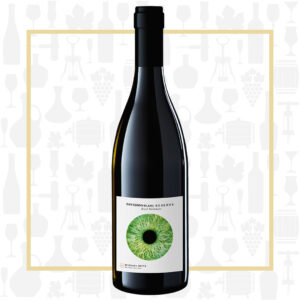Cellar Profile
In 2000, 3rd generation winemaker and owner, Michael Opitz, began producing fine wines from grapes that had been grown in the same spot for over 100 years. Michael’s Motto: “no tricks, just wine”. He takes a serious ecological approach in the vineyard and his wines are all crafted using minimal intervention in the cellar. Grapes are grown in harmony with the local flora and fauna of the Pannonian Plain and the Seewinkel National Park nearby. No pesticides or herbicides are used and he rotates the ground cover between the old vines and dry farms to stress the plants into producing fully ripe fruit. Planted to indigenous grapes like Zweigelt, Blaufränkisch and Grüner Veltliner, Opitz also works with French varietals such as Chardonnay, Pinot Gris and Sauvignon Blanc, which grow particularly well in the gravelly, loamy soils of the estate.
Region
The Burgenland sits in the furthest east area of Austria, also known as “Lower Austria”. It is known for producing the richest reds in the country, as well as mineral-driven whites. Located on the continental Pannonian Plain, the summers are quite hot and extremely dry, with low average rainfalls. However, the sub-region of Neusiedlersee near Weingut Opitz, is quite humid and many of the vineyards are consistently able to produce botrytis-affected sweet dessert wines, including the treasured Trockenbeerenauslese that Burgenland is famed for. There are inland saline lakes, leftover from the ancient inland sea, adding a curious complexity to the wines of the region, particularly the whites. The evenings are cool, slowing the ripening process and maintaining acidity. The main reds planted are Blaufränkisch and Zweigelt, with Gruner Veltliner and Welschriesling as the primary whites. There is a decent volume of French varietals such as Sauvignon Blanc and Merlot planted as well.
Vineyard
The Opitz family first planted grapes over 100 years ago, on the same site the old vine vineyards sit today. The soil is loose and gravelly, with sandy loam. Influenced by Lake Neusiedl and the saline lakes of Seewinkel National Park nearby, the vineyards are dry-farmed and organically cultivated.
Varieties
Sauvignon Blanc originates from the Bordeaux region of France. Depending on the climate, the flavour can range from aggressively grassy to sweetly tropical. In cooler climates, the grape has a tendency to produce wines with noticeable acidity and green flavours (grass, green bell peppers and nettles), tropical fruit (passion fruit) and floral notes (elder flower). In warmer climates, it can develop a more tropical fruit profile but risks losing its aromatics from overripeness, leaving only slight hints of grapefruit and peach. In Austria, it is fairly heavily planted in Styria and the Burgenland, where its style is more French than New World. There are many great examples of botrytised Sauvignon Blanc from these areas.
Winemaking
Hand-harvested fruit is brought into the winery cool. After a gentle crush and a brief maceration on the skins, the juice is fermented using indigenous yeasts. The wine is then transferred into seasoned Caucasian oak barrels for 10 months of aging before being bottled, unfined and unfiltered.
Tasting Notes
Typistic Sauvignon Blanc aromas of fresh grass, lemon, peach and slate. The medium-weight palate is zesty, with plenty of mouthwatering acidity. Though dry, there is a touch of backend sweetness and the fruit is certainly not austere. Saline minerality dominates the mid-length finish. Chill lightly and enjoy with white asparagus in a lemon cream sauce, tuna sashimi or roast pork sandwiches with grainy mustard.

 info@buyersandcellars.ca
www.buyersandcellars.ca
info@buyersandcellars.ca
www.buyersandcellars.ca